| Villeneuve revisited |
Text by Sylvette Babin
translated by Bernard Schutz The web of community ties formed within a city often coincides with the geographical boundaries of a neighbourhood, where proximity makes our daily activities conducive to exchange. Seeking to step out of traditional exhibition spaces the Fovea collective has decided to approach the cohabitation of art and the community by placing it within this neighbourhood setting. Tour de Villeneuve, which takes place in shops or on particular streets of the Villeneuve street block, avoids the spectacular in order to discreetly infiltrate the daily life of the neighbourhood’s residents. The reason Fovea teamed up with the local shopkeepers is because they are the cornerstones of community activity. Their shop spaces, more intimate than those of department stores, foster interaction between individuals, and thus assure the perpetuation of communication. Within the context of an in situ art, or more aptly a public intra-muros art approach, the artists sought inspiration in the particularities of each shop, and through their respective visions, tried to bring out the "spirit of the place". Some of the works are formally integrated into the space, sometimes to the point of being camouflaged, while others delve into the history of the shop and shopkeepers as their point of departure. Certain works invite contemplation, others call for manipulation, and some even become utilitarian objects. They all share an invocation of different aspects of memory. Reminiscence or amnesia, intimate or collective memory, the remembrance and evocation of a past that is more or less recent, and archival references are the avenues taken by the Fovea artists as they put their reflection on in situ photography to work. |
| SUSAN COOLEN | LEPIDUS LEPIDOPTERA |
| It is at dusk that these swarms of lepidoptera come alive, at the moment when the light of the streetlights, on which they congregate, traverses their diaphanous wings. |
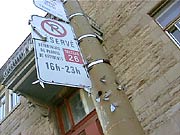 | One must be patient and alert to discover this subtle installation, and to take one’s time to appreciate its luminosity. Contemplation and slowness are at the heart of this work, whether it be through the reference to the long metamorphosis of the chrysalis, or through the notion of well being that is associated with the cocoon. Lepidus Lepidoptera invites us to reflect on the moth’s quest for light, a quest, which after all, is perhaps not that different from our own. |
| |
| SUZANNE GRÉGOIRE | L'ÉCLAT DES CHAIRS. ÉTUDE # 2 |
| Skin is the surface upon which time writes its memoirs. Each wrinkle, scar or texture tells the story of the person who bears it. The translucent mosaic L’éclat des chairs [The Breaking of Flesh] displays fragments of bodies at different stages of the ageing process. The parallel between the glass samples and the skin’s cellophane quality expresses the body’s fragility and sensibility. However, what is most forceful here it is the idea of transparency as a metaphor of unveiled intimacy. | 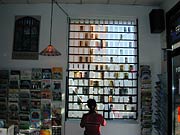 |
| |
| ÉLÈNE TREMBLAY | PORTER SON PASSÉ |
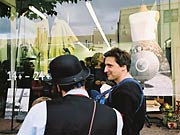 | Fragments of women’s stories are pinned on a mannequin, and with each life tale a different motif is added to the fabric of a piece of clothing. Cut from the cloth of their past, the re-sewn pieces of the pattern reformulate the subjects’ identity, through a sort of reconfection of memory. The whole suggests a family album : that of several generations of mothers and daughters. Porter son passé comme une robe [To Wear One’s Past Like a Dress] sketches the contours of the feminine body that has succeeded in escaping idealised models throughout different historical periods. |
| |
| LOREN WILLIAMS | PHARMACY |
| The power to heal is a precious gift, and the history of healing methods is replete with anecdotes that oscillate between medicine and witchcraft. In boxes disseminated among the pharmaceutical products, Pharmacy presents a minute repertory of ingredients; plants and insects with diverse properties, which in the past went into some very strange recipes. The past and present coalesce on the shelves and stimulate our fertile imaginations to recreate a dispensary where one can concoct miraculous potions of one’s own. | 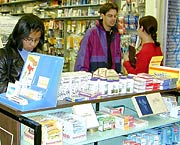 |
| |
| DANIELLE HÉBERT | ASSEOIR |
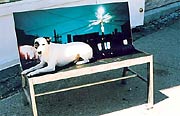 | In the image of this store, Danielle Hébert has chosen to give photography a utilitarian vocation. Art and restful comfort meet on this metal bench adorned with a city scene at sunset. Strolling passersby are invited to sit here for a few moments and take in the surrounding urban landscape. Asseoir [Sit] is a convivial invitation. Inside the store one may discover "new products" spread among the candy bars section. The wrappings of these items were conceived from images that refer to everyday life. |
| |
| EILEEN LEIER | LA SÉRIE DES PAYSAGES I VILLE DE QUÉBEC |
| Through its placement in alcoves, this triptych of anthropomorphic bushes takes on a contemplative or compassionate demeanour that almost evokes a devotional scene. Humanity exudes from each form and seems so manifest that one can hardly believe that it is only plants that are hidden under the drapes. In its transposition to the city and consequent removal from its natural context the subject interrogates the evocative force of an in situ work. | 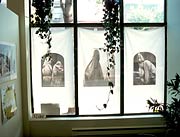 |
| |
| ALAIN CHAGNON | CHACUN SON CHAPEAU |
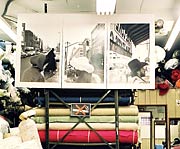 | The clothes and hats we wear offer an index of our personality or cultural origins. The choice of textiles from which they will be fashioned is influenced by practical, aesthetic and social concerns. In the image of the hundreds of varieties of fabric, which are amassed in this store, Chacun son chapeau [To Each His Hat] underlines the cohabitation of different cultures through a look at certain ways of covering one’s head. |
| |
| ANDREA SZILASI | SANS TITRE |
| The laundry ritual is charged with cycles and circular movements that ultimately refer to time. Inspired by the laundromat owners’ origins, Cosmogonies creates a parallel between this cyclical universe and Hindu iconography. Through a delicate manipulation of these symbols and their adaptation to a contemporary art context, the work proposes a coloured reorganisation of the laundromat’s white and monotonous interior. Waiting is transformed into a meditation on the concentric rhythms of life. The creative process and the technique behind Cosmogonies also reference the intersection of cultural identities in the heart of a city. | 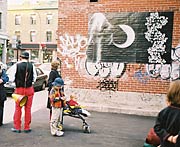 |
| |
| EVA QUINTAS | COSMOGONIES |
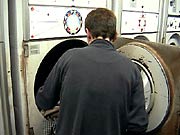 | The laundry ritual is charged with cycles and circular movements that ultimately refer to time. Inspired by the laundromat owners’ origins, Cosmogonies creates a parallel between this cyclical universe and Hindu iconography. Through a delicate manipulation of these symbols and their adaptation to a contemporary art context, the work proposes a coloured reorganisation of the laundromat’s white and monotonous interior. Waiting is transformed into a meditation on the concentric rhythms of life. |
| The creative process and the technique behind Cosmogonies also reference the intersection of cultural identities in the heart of a city. |
| |
| GUY MERCIER | HISTOIRE DE TEMPS ET D'ESPACE EN SUSPENS |
| In integrating a place one also adopts both its essence and functional logic. In a second-hand boutique, accumulation and clutter are natural, and each new element that is added easily slips into the already existing array. |
| This also applies to the sculptures Histoire de temps et d’espace en suspens [A History of Suspended Time and Space] whose strange and playful forms fit in perfectly with the place. Made from everyday objects the sculptures integrate images that could belong to the memory of all travellers. The work invites the passerby to play and relish in the pleasures of discovery. | 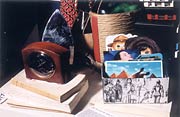 |
| |
| NICHOLAS AMBERG | POSTCARDS |
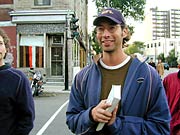 | One could choose a postcard from this series that displays different scenes of life and travel. One could take them home, let oneself be inspired for several days, and then add a commentary or fragments of a story to share with others. As a moving intervention based on the desire to communicate, Postcards gravitates around the process of correspondence and sharing of ideas. In gathering the words of passersby or Villeneuve residents, the work acknowledges the presence of the other. It absorbs and carries a collective memory. |
| |
| STEVE LEROUX | SANS TITRE |
| Behind the rows of immobile bicycles, rural landscapes pass by our eyes. In showing images taken from the peripheral vision of a cyclist, the installation recreates a trajectory traversed in fast pace mode. In this overcharged space where the bicycles’ movement is relegated to a past memory or a future excursion, the "mobility" of the work creates an intriguing paradox. The result irrevocably inspires a desire for nature, escape and freedom. | 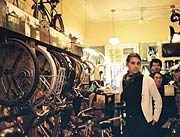 |
| |
| GAIL PASLAWSKI | RESTORATION |
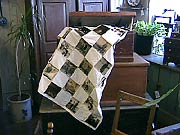 | In this place, which carries a universal memory, a specific presence has settled in. Just as one would in an inhabited place, here one can open chests and drawers to find traces of this presence: various objects and photographs charged with memories and odors. Discreet yet numerous, each object is labelled and identified suggesting an investigation, or more aptly, a quest for a lost identity. The work is in fact the "repair" of the artist’s personal history, the rediscovery of her Ukrainian roots. Restoration attempts to rehabilitate intimate memory. |












